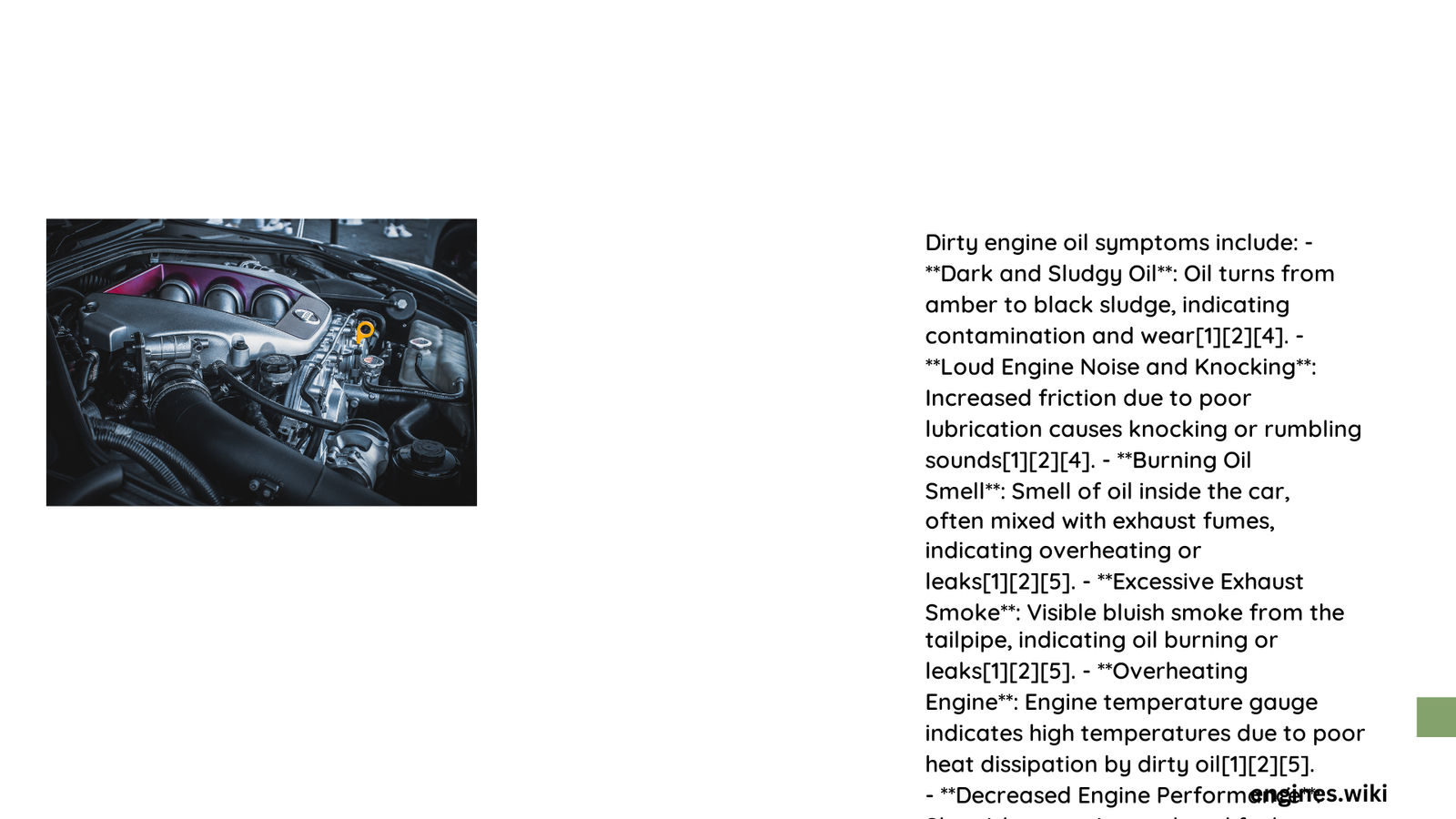Dirty engine oil can silently destroy your vehicle’s performance, leading to expensive repairs and potential engine failure. Recognizing early warning signs is crucial for maintaining your car’s health. From unusual engine noises to dashboard warning lights, these symptoms indicate your engine oil needs immediate attention and potential replacement.
What Are the Most Common Dirty Engine Oil Symptoms?
How Can Warning Lights Reveal Oil Problems?
Dashboard warning lights are your first line of defense against engine damage. Modern vehicles are equipped with sophisticated sensors that detect oil-related issues:
| Warning Light | Potential Indication | Urgency Level |
|---|---|---|
| Oil Pressure Light | Low oil pressure | High |
| Check Engine Light | Oil contamination | Medium-High |
| Engine Temperature Light | Potential oil breakdown | Critical |
Why Do Engine Noises Signal Oil Contamination?
Unusual engine sounds are critical indicators of dirty oil:
- Knocking Sounds: Metal-on-metal contact due to insufficient lubrication
- Grinding Noises: Increased friction between engine components
- Ticking or Clicking: Potential valve train lubrication issues
What Color Changes Reveal About Engine Oil?
Clean engine oil typically appears amber or light brown. Dirty oil demonstrates distinct color transformations:
- Dark Brown: Early contamination stage
- Black: Advanced contamination
- Sludgy Appearance: Severe oil degradation
How Does Performance Decline With Dirty Oil?
Performance metrics provide clear evidence of oil contamination:
- Reduced Acceleration: 15-25% power loss
- Decreased Fuel Efficiency: Up to 2-3 miles per gallon reduction
- Sluggish Engine Response: Noticeable during acceleration
Can Exhaust Smoke Indicate Oil Problems?
Exhaust color variations reveal critical engine health insights:
- Blue Smoke: Oil burning in combustion chamber
- Black Smoke: Excessive oil consumption
- White Smoke: Potential coolant contamination
What Mechanical Symptoms Emerge?
Mechanical indicators of dirty engine oil include:
- Increased friction between moving parts
- Accelerated wear on engine components
- Potential bearing and piston ring damage
How Frequently Should Oil Be Checked?
Recommended maintenance schedule:
- Standard Vehicles: Every 3,000-5,000 miles
- Synthetic Oil: Every 7,500-10,000 miles
- Severe Driving Conditions: More frequent checks recommended
Prevention and Maintenance Tips

- Regular oil changes
- Use high-quality oil filters
- Monitor oil levels consistently
- Address warning signs immediately
- Follow manufacturer’s maintenance guidelines
Technical Insights
Dirty engine oil contains:
– Metal particles
– Carbon deposits
– Combustion byproducts
– Moisture
– Potential sludge formations
These contaminants dramatically reduce oil’s lubricating capabilities, leading to accelerated engine wear.
Professional Recommendations
- Schedule professional oil analysis annually
- Use manufacturer-recommended oil grades
- Consider synthetic oils for enhanced protection
- Invest in quality oil filters
Potential Repair Costs
| Contamination Level | Potential Repair Cost |
|---|---|
| Minor | $200 – $500 |
| Moderate | $500 – $2,000 |
| Severe | $2,000 – $4,000+ |
Conclusion
Understanding dirty engine oil symptoms empowers vehicle owners to prevent costly repairs. Proactive maintenance and timely interventions can significantly extend engine life and performance.
